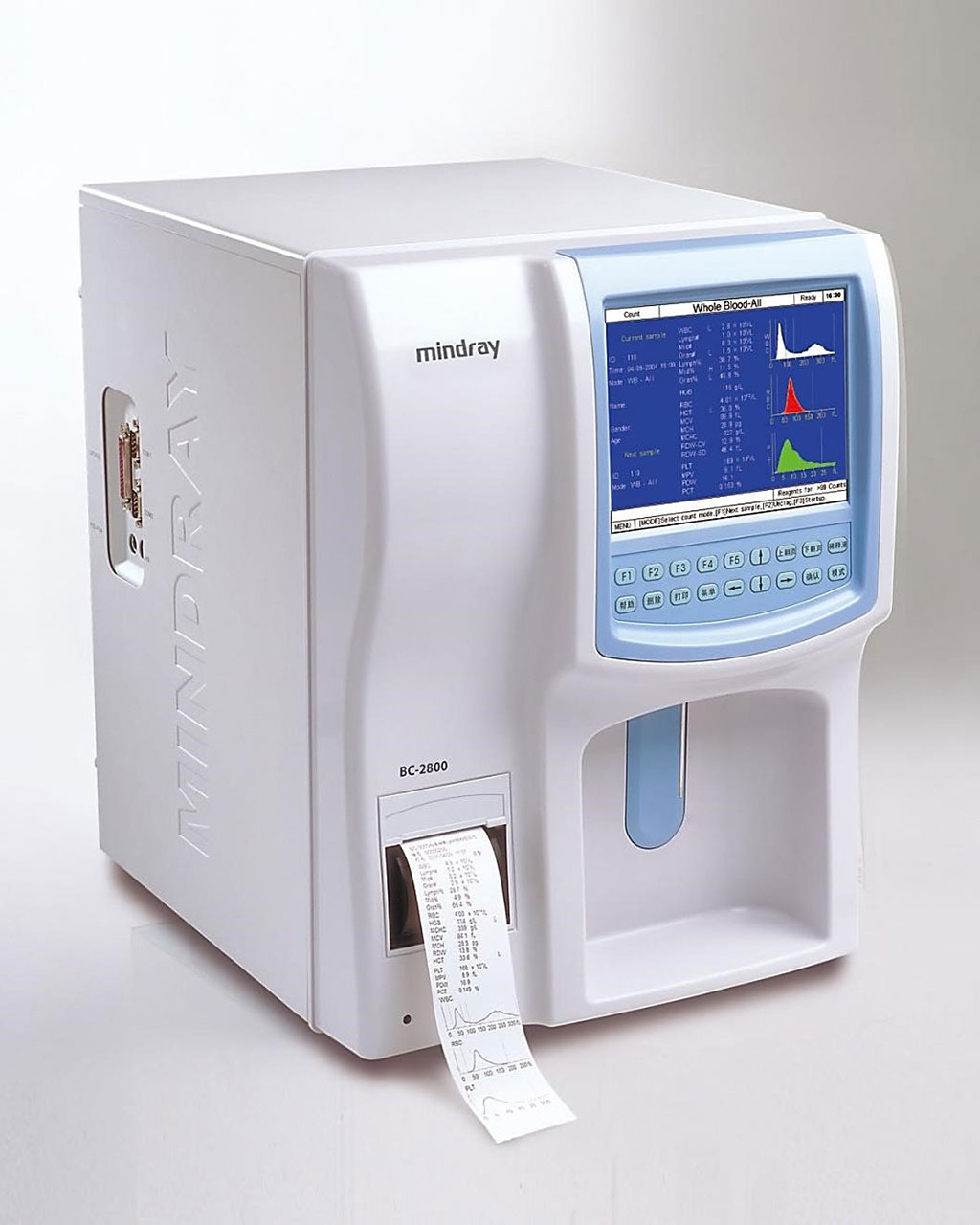Quantitative Agglutination Determined on Automatic Hematology Analyzer
By LabMedica International staff writers
Posted on 16 Sep 2020
The currently available agglutination identification methods are slide methods and test tube methods. Based on the distribution, uniformity and comprehensive changes of non-aggregated cells and agglutinating cells in the liquid, the agglutination degree and strength can be determined by the naked eye.Posted on 16 Sep 2020
The results are subject to the subjective influence of the observers, and it has been shown that the amount of agglutination determined in the same sample by different people and the determination of the same sample by the same person at different times were significantly different, thus affecting the accuracy and reliability of the study.

Image: The Mindray BC-2800 Fully Automatic Hematology Analyzer with 19 Parameters for CBC /Blood Cell Test for Hospital Use (Photo courtesy of Mindray).
Medical Laboratorians at the Dalian Medical University (Dalian, China) selected and diluted Type A serum to react with the type B cells and the normal saline group was used as the control group. A red blood cell (RBC) count was performed using an automatic hematology analyzer (Mindray, Shenzhen, China), after incubation in a warm bath for 30 minutes. The degree of agglutination on the glass slide was also recorded. A positive serum of antinuclear antibody (ANA) was collected and RBC agglutination between RBC-O and ANA positive serum was determined using the automatic hematology analyzer method.
The scientists reported that the relationship between the results from the automatic hematology analyzer and the agglutination strength using the glass slide method was determined and showed that there was a good linear relationship between the agglutination index (AGI) and serum antibody concentration. There was a significant difference between the serum of ANA positive patients and the normal control group. The stability test results showed a coefficient of variation (CV) < 10% when using the automatic hematology analyzer, indicating that the reproducibility of the test was good.
The investigators found that when normal human serum (control group) was mixed with red blood cells the value was lower than when mixed with normal saline (AGI). Furthermore, the analysis found that the AGI value was normally distributed, so they believe that healthy donors are likely to have a low level of resistance to RBC antibody. This shows that the automatic hematology analyzer can detect weak agglutination antibody in serum, but classical methods cannot observe this phenomenon.
The authors concluded that the automatic hematology analyzer can not only effectively detect the agglutination antibody in serum, but also provides a new tool for clinical application to detect agglutination with high sensitivity, and is quantitative, objective and accurate. The study has been available online since July 3, 2020 in the journal Clinica Chimica Acta.














